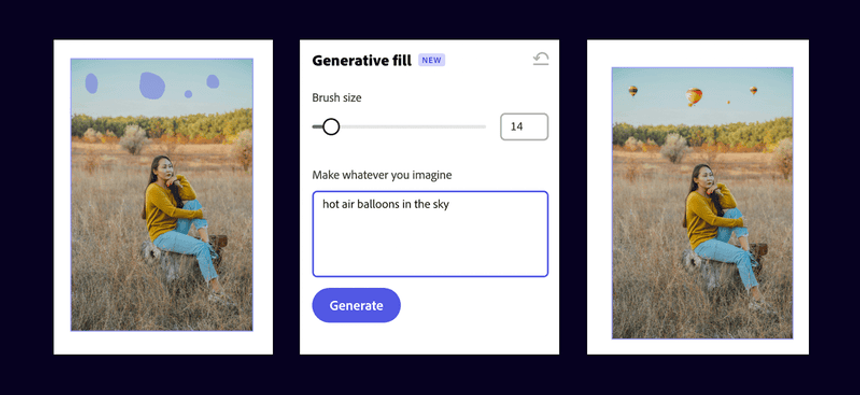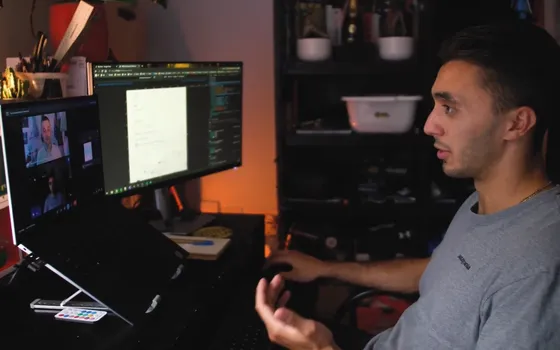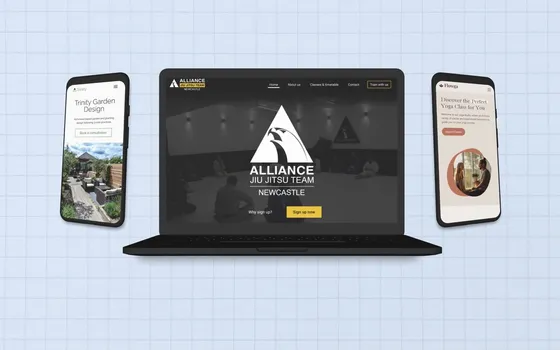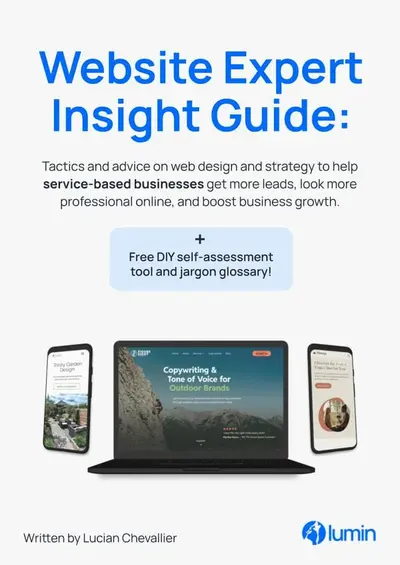Post contents
Hey, I’m Amy 👋 explorer of all things AI, public speaker, and award-winning founder of Bloom Creative (helping businesses to bloom with meaningful branding, eye catching print design, and quality digital content)
Over the last couple of years, the term ‘artificial intelligence’ has become commonplace in the tech, business, and marketing worlds. And now we’re seeing it make its way into several industries and even our personal lives (‘magic’ photo editing apps, for example).
Have you dabbled with AI design tools yet? Or been tempted to? Whether you’ve tried a couple or none at all, this blog post is for you! We’ll begin with how to get started and end with some things to watch out for. AI doesn’t need to be something that’s scary and unknown - by learning about it, giving some tools a go, and knowing how to be safe, you’ll start to find ways that AI can work with you to enhance your creativity.
Disclaimer: I am speaking from my own experiences about some tools I have used. I am not professionally recommending these tools for you and/or your business. You may find it helpful to read to the end before trying any AI tools out for yourself for some things to watch out for before you begin.
Where to begin with AI design tools?
My biggest tip for getting started with AI is to start with something small and start with something that’s just for fun! That means taking your business/work hat off for a moment and just having a bit of fun with a few different tools. Once you’ve used them for fun, then you could start to think about ways you could use them in your business.
Image Generation
These are a group of AI tools that create images based on text prompts. Adobe Firefly’s image generation tool does just that, making images from the short description you write. Text-to-image tools like this provide a great starting point for AI exploration. When you’re writing your prompt, try describing the image in the kind of detail you’d use if you were explaining the scene to someone who couldn’t see it. This will help the tool to build the image you had in mind.
When you could use text-to-image tools:
- to generate images for your website (be sure to save them as websized files though!)
- to generate images for your social media content
- conceptualisation
- storyboarding or moodboarding
- brainstorming
For fun first: you can use AI text-to-image tools to generate really random images, like a penguin DJ at a disco in Antarctica.

Image Editing
Similar to image generation tools, you can also use AI tools for editing images either by text prompt (written by you) or by editing automatically based on what it thinks you might be after. Adobe Photoshop and Adobe Lightroom have several AI features that enable image editing at speed. From removing unwanted items like rubbish on the floor, to generating objects like hot air balloons in the sky, you can use text prompts to add and remove objects to existing images. If you’re not a pro designer, Adobe Firefly (also in Adobe Express) and Canva have also developed and released easy-to-use AI-powered image editing tools.
When you could use AI image editing tools:
- to increase the resolution of low-res images
- to remove unwanted objects from photos
- to add objects into existing photos
- to widen images for website banners (generative expand)
- to alter, remove, or replace skies or backgrounds
Image editing tools could save you lots of time scrolling through image sites, because once you find an image that’s close enough you could use these AI editing tools to make it just right.

Many More Design Tools
There is a huge range of other creative AI tools out there, from text-to-video to text-to-vector tools, and more. There are even some AI tools that will take your longform videos and cut them down into a series of shorter reels in seconds.
Practice Prompting
When you use AI tools, often the quality of what you get out (the output) correlates to the quality of what you put in (the input or ‘prompt’). Prompting in itself is a skill and takes practice. If the result isn’t quite right, go back to your prompt and see what you could change to better describe the result you’re looking for. The key to this is trying it out and practising to discover the prompts that work well for you.
Human input after the AI output
When you use an AI tool to help you create something, check it over with your human intelligence / commonsense. Oftentimes, when I generate an image with AI, I also then use my human skills to tweak and edit the image until I get the result I’m happy with. This is similar to when you use text-to-text AI tools like ChatGPT, where rather than copying and pasting text written by AI, you can use it as the basis to start from and make it your own.
What to Watch Out For
There are some things worth watching out for when it comes to trying AI tools for yourself. This isn’t an exhaustive list, and I encourage you to use your own commonsense. If you’re not comfortable with a company’s privacy/data policy, you don’t have to use their tool.
Check privacy/data policies & safeguard sensitive data
Do you know where your data is being shared? Will it stay private or be used to train AI models, etc.? Check the privacy/data policies before you use new tools. If you’re working with confidential information (including full names, email addresses, etc.), trade secrets, and private information that’s not already in the public domain, it would be best practice to keep this information away from AI tools. There are some tools out there with higher security than others, such as some used in healthcare, but when you’re getting started it’s best to be more cautious until you’ve properly researched and/or sought legal advice.
Verify accuracy and appropriateness
AI-generated information may not always be accurate or appropriate for your audience. Check it over yourself and don’t rely solely on AI to get it right. This not only goes for text but also images - not all images generated by AI will be accurate, and sometimes you need to look closely to spot the errors so you can fix them.
Check commercial usage rights & who owns what you create
Before you use a creative AI tool to make something for your business, check the commercial usage rights. Sometimes, such as when a tool is in beta, content generated by AI tools can only be used for personal use. Similarly, check who owns the content you create… will you have full ownership or will the company who owns the AI tool you’ve used also have ownership? This varies from tool to tool so check the T&Cs.
Cancel those free trials
If you’re trying out lots of tools for fun, don’t get caught out by the sneaky free trials that bill you when the trial ends if you’ve forgotten to cancel. Set a reminder in your calendar as soon as you sign up to a free trial so you remember to cancel it on time.
Want to know more?
Connect with Amy on LinkedIn where she shares content about AI, design, and branding! She also offers talks and workshops on AI, design, and branding - email amy@bloom-creative.co.uk to find out more.
- Article categories:
- Web design and development







